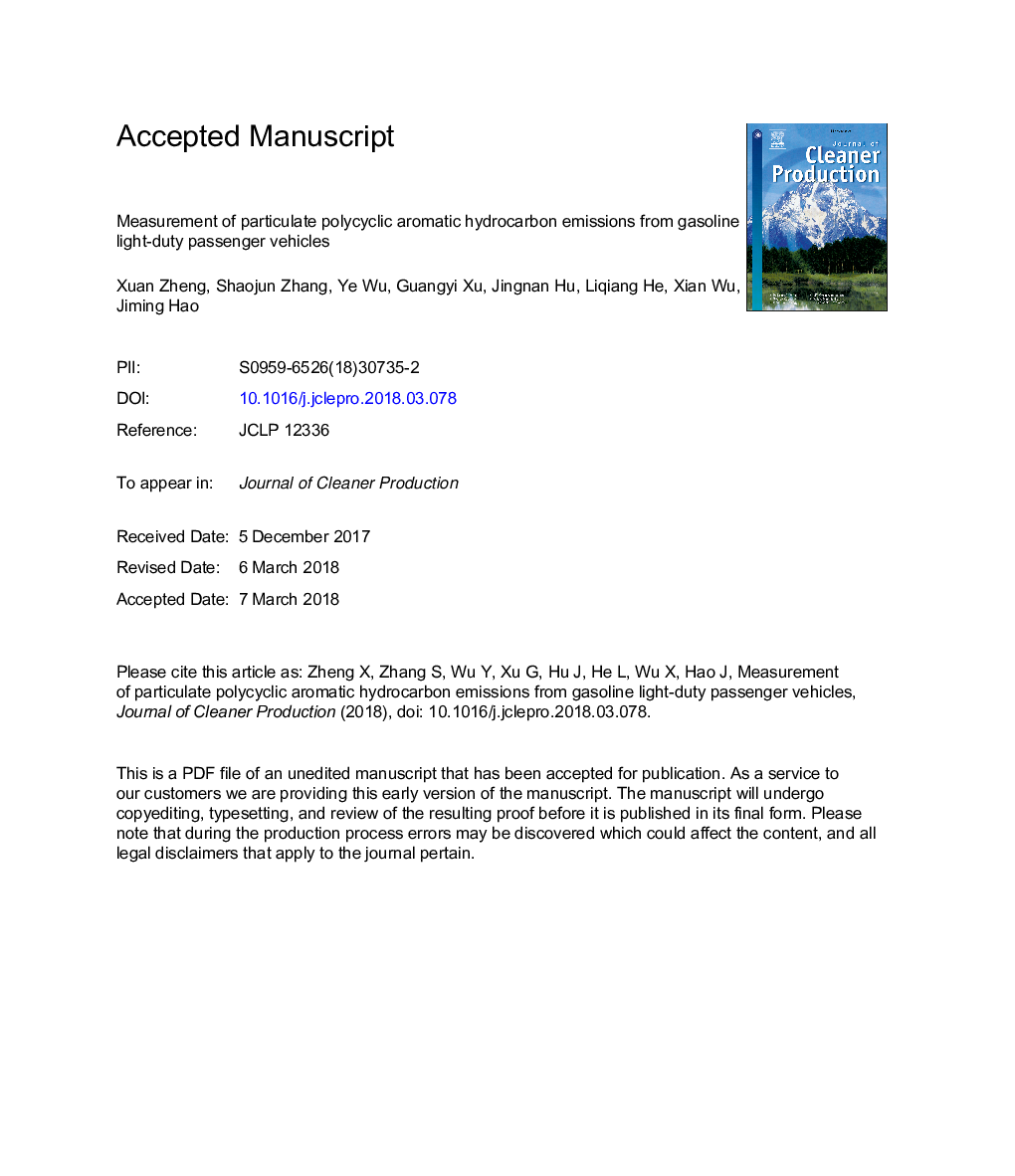| کد مقاله | کد نشریه | سال انتشار | مقاله انگلیسی | نسخه تمام متن |
|---|---|---|---|---|
| 8096571 | 1522068 | 2018 | 25 صفحه PDF | دانلود رایگان |
عنوان انگلیسی مقاله ISI
Measurement of particulate polycyclic aromatic hydrocarbon emissions from gasoline light-duty passenger vehicles
ترجمه فارسی عنوان
اندازه گیری انتشار هیدروکربن های آروماتیک چند حلقه ای از وسایل نقلیه سبک مسافرتی بنزینی
دانلود مقاله + سفارش ترجمه
دانلود مقاله ISI انگلیسی
رایگان برای ایرانیان
کلمات کلیدی
GDIGPFTEFWLTCPEMsTWCconstant volume samplerCVSTHCPAHPortable emissions measurement systemNOx - NOXQA/QC - QA / QCEmission measurement - اندازه گیری انتشارNitrogen oxides - اکسید نیتروژنHealth impact - تأثیرات بهداشتیgasoline direct injection - تزریق مستقیم بنزینparticle number - تعداد ذراتParticle - ذراتtoxic equivalency factor - عامل همسان سازی سمیThree-way catalytic converter - مبدل کاتالیستی سه طرفهcarbon monoxide - منوکسیدکربنgasoline - نفت گاز یا گازوئیلPolycyclic aromatic hydrocarbon - هیدروکربن آروماتیک چند حلقه ایPolycyclic aromatic hydrocarbons - هیدروکربن آروماتیک چندحلقهایBlack carbon - کربن سیاه Total hydrocarbons - کل هیدروکربن ها
موضوعات مرتبط
مهندسی و علوم پایه
مهندسی انرژی
انرژی های تجدید پذیر، توسعه پایدار و محیط زیست
چکیده انگلیسی
Tackling vehicle emissions is one important task for governmental stakeholders to develop cleaner cities. Gasoline-fueled light-duty passenger vehicles (LDPVs) are intensively used in populous urban areas to meet passenger transportation demand. However, gasoline vehicle emissions raise the health risk due to the proximity of exposure to gasoline exhaust. To better understand the genotoxicity of gasoline emissions, this study is focused on their emissions of particulate polycyclic aromatic hydrocarbons (p-PAHs). We combined dynamometer testing, filter sampling and offline chemical analysis to measure p-PAH emissions from five in-use gasoline LDPVs. The results indicate that the emission factors of tested vehicles under the Worldwide Harmonized Light Vehicles Test Cycle (WLTC) decrease significantly with emission standard, from 11.27â¯Î¼gâ¯kmâ1 for one China 3 LDPV to below 6â¯Î¼gâ¯kmâ1 for the other newer LDPVs (China 4 and 5). Different from the mass distribution of p-PAH species for diesel vehicles, medium-and high-molecular-weight PAHs (e.g., 4, 5, and 6-ring species) are considerably identified from the gasoline particle samples. These medium and high-weight PAHs, such as benzo [a]pyrene (BaP) and dibenzo [ah]anthracene (DaA), in general have much greater toxic equivalency factors than low-molecular-weight PAHs. Furthermore, this study also reports that engine type and driving cycle conditions would have discernible impacts on p-PAH emissions. The gasoline direct injection (GDI) engine-equipped LDPVs would increase p-PAH emissions compared with the counterparts using port-fuel injection (PFI) engines. Cold start and transient driving conditions could also result in increased p-PAH emissions, while high-speed driving conditions tend to reduce the p-PAH content in total particles. The significant health impacts caused by p-PAH emissions from gasoline LDPVs should be concerned, and more effective measures should be taken to eliminate gasoline particle emissions.
ناشر
Database: Elsevier - ScienceDirect (ساینس دایرکت)
Journal: Journal of Cleaner Production - Volume 185, 1 June 2018, Pages 797-804
Journal: Journal of Cleaner Production - Volume 185, 1 June 2018, Pages 797-804
نویسندگان
Xuan Zheng, Shaojun Zhang, Ye Wu, Guangyi Xu, Jingnan Hu, Liqiang He, Xian Wu, Jiming Hao,
